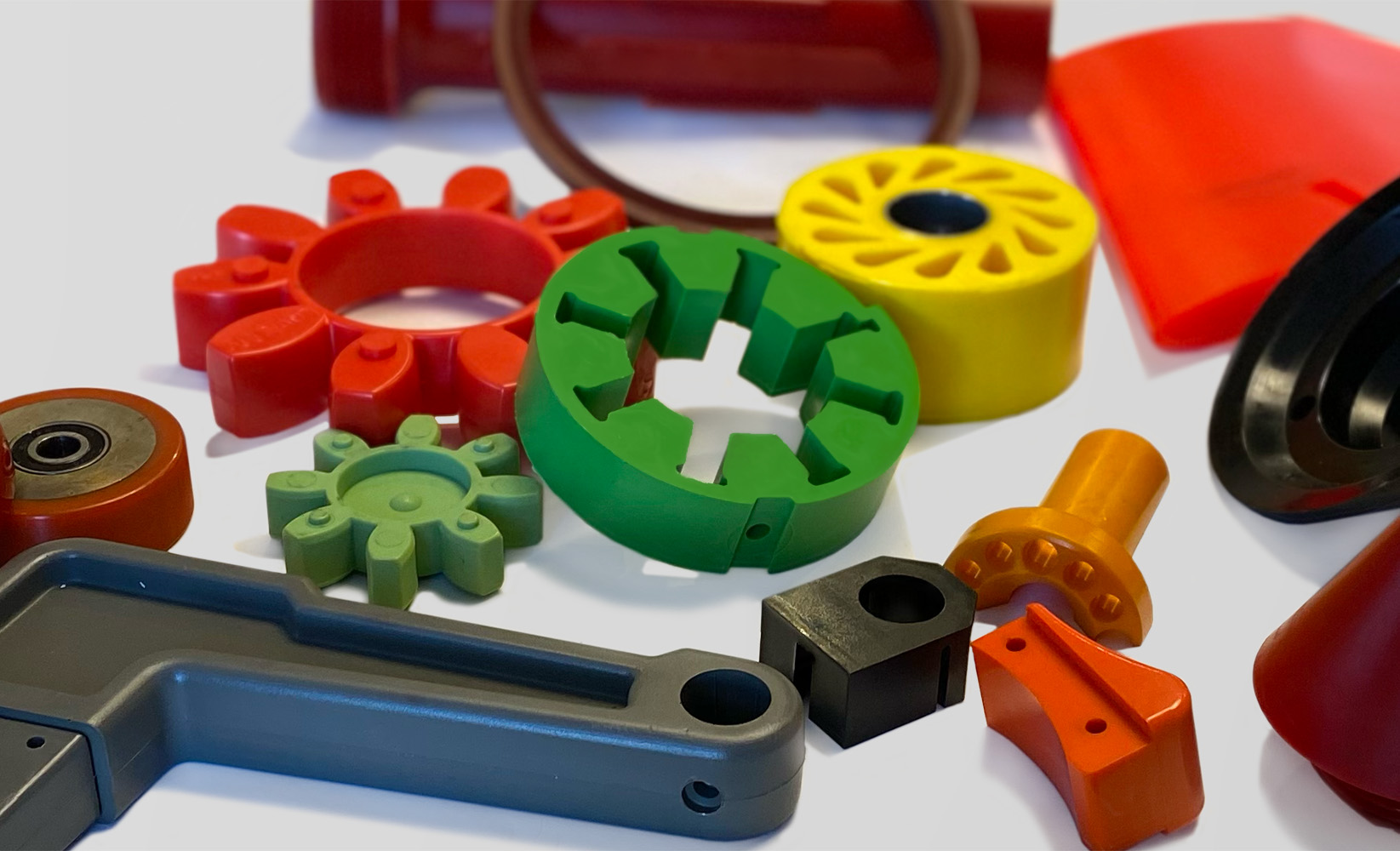Molded Dimensions Group maintains expertise in rubber, plastics, and urethane production, with each material boasting its own unique benefits and best use applications. In looking at urethane specifically, its advantages are rooted in a combination of properties that can best be explained as “strong, but flexible,” according to our In-House Chemist Tony Lukas. He shares, “Polyurethane can be described as an engineering material that offers many property “levers” for the chemist to pull.”
- Hardness
Urethane can be formulated in a wide range of hardness, or durometer. On the low end, 20 Shore “A” is achievable, which is roughly equivalent to a rubber band. On the high end, 80 Shore “D” is approachable, which is close to many plastics. Generally speaking, the entire range can be processed in similar ways and in the same molds, providing great flexibility to trial multiple materials. - Physical Properties
Compared to other materials in similar durometer ranges, urethane’s physical properties can be combined for excellent load-bearing capabilities and resilience. On the low end of the hardness scale, its tensile strength is generally higher than rubber materials in the same range. On the high end of the scale, urethane maintains elongation properties well above plastics in the same range. - Fluid Resistance
Urethane has excellent fluid resistance properties, making it a good choice in many different applications. When combined with its abrasion resistance properties, urethane is an effective solution in harsh environments that contain solids and chemical slurries. - Liquid Form
Since urethane raw materials are processed in liquid form, colors (as liquids or pastes) can easily be added at the mixing stage. The liquid also readily accepts additives or fillers, such as Teflon®, antioxidants, and UV stabilizers.
“These advantages allow the chemist to formulate materials that mesh nicely with the molding processes used to make both simple and complex parts that exhibit the “strong, but flexible” benefits of urethane,” says Tony Lukas.
Urethane is lighter and quieter than metal and offers flexibility. And in comparison to plastics, urethane exhibits impact and abrasion resistance plus compression set resistance/rebound. With such properties, urethane stands out against many of the standard material alternatives, and, based on knowledge of the end use application, urethane can truly be dialed in to best fit part requirements.




